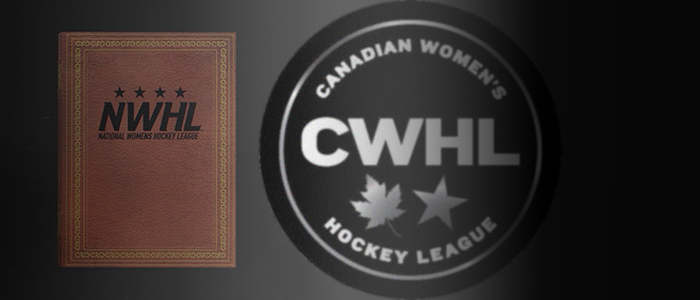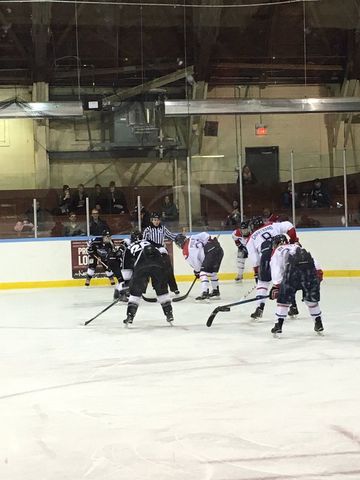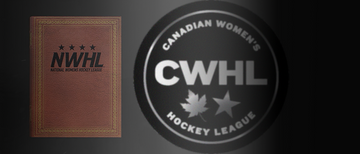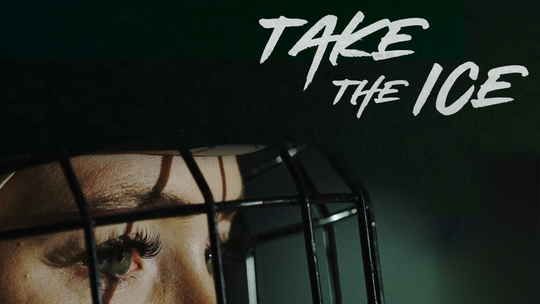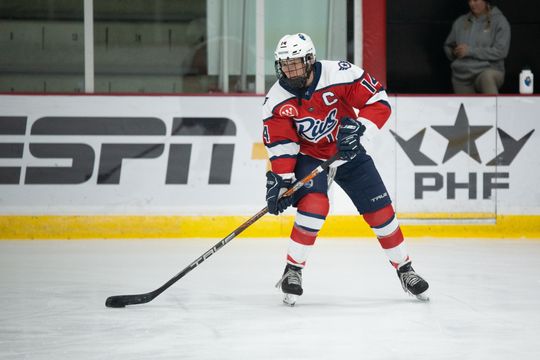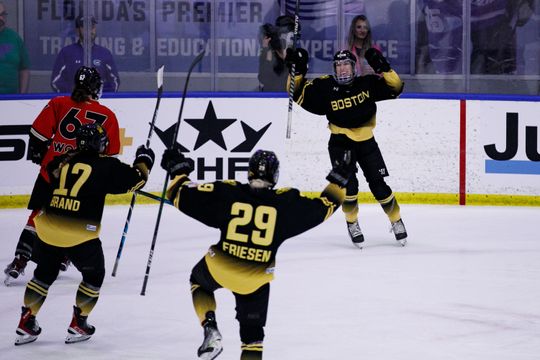The journalistic mire that has befallen the two professional/post-collegiate women's hockey leagues in North America is difficult to discuss. Coverage is fractured and often divisive, which speaks to not only the passion of the writers and fans who follow this sport, but also the hostile environments in which women's sports tend to operate.
At the midpoint of the first hockey season during which both leagues are coexisting, and with coverage growing all the time, I'm going to offer a brief rundown of what we know about both leagues, both historically and how they are handling key issues often covered in the media. I'm also going to offer my opinions on said rumors and controversies -- keeping in mind that I'm a female journalist, an admitted supporter of Team USA's women's hockey program, and the founder of a feminist publication that frequently engages in feminist media criticism.
This is meant to be an overview. Factual corrections can be submitted directly to the author: zoe@victorypress.org. General disagreement and debate on opinions offered is welcomed.
This is Part I of this project. Part II will tackle the recent controversy about the women's inter-league outdoor game that's purported to be taking place at the site of the NHL Winter Classic on December 31. Part III will discuss players' rights, including player safety and contracts in both leagues.
This got long, so here's a table of contents. You can use the links to jump down or to go directly to a part of the page.
1. Beginner's Fact Sheet: CWHL, NWHL
2. On the NWHL's "Secret History", and Dani Rylan as a villain or hero
Beginner's Fact Sheet
CWHL (Canadian Women's Hockey League)
- Established: 2007
- Headquarters: Newmarket, Ontario, Canada
- Founders and leadership: a players-based initiative of Canadian players, such as Lisa-Marie Breton-Lebreux, Allyson Fox, Kathleen Kauth, Kim McCullough, Sami Jo Small, and Jennifer Botterill, all of whom played in the original National Women's Hockey League (another Canada-based league consisting of ~17 clubs [not all necessarily at the same time] which existed from 1999 to 2007). The current league commissioner is Brenda Andress, and the CWHL has a list of its governors and advisors on its website.
- Brief history of inter-league relations: The CWHL has competed with the Western Women's Hockey League (WWHL) in the past. With the effective dissolution of the WWHL, the Minnesota Whitecaps, who formerly competed against CWHL teams for the Clarkson Cup, are now a team of free agents and some former CWHL players. Since about 2011, the CWHL has distanced itself from the WWHL and the Whitecaps, which has led the then-Whitecaps business manager to accuse the CWHL of "collusion" (source: Donna Spencer/Canadian Press). When the new NWHL was founded, the CWHL issued a frosty press release about protecting their assets, and has otherwise remained mostly silent on the NWHL. However, the announcement of an inter-league game between Les Canadiennes de Montreal (CWHL) and the Boston Pride (NWHL) at the site of the 2016 Winter Classic in Foxborough, Massachusetts could indicate a possible olive branch between the two leagues (if some recent controversy can be resolved -- more on that later).
- NHL relations?: Les Canadiennes de Montreal, the Toronto Furies, and the Calgary Inferno all have partnerships with their NHL counterparts (the Canadiens, Maple Leafs, and Flames respectively). This has involved resource sharing of varying degrees (access to marketing teams and facilities/trainers, for example) as well as monetary investments and assistance with equipment. Sources: Montreal (since 2015), Toronto (since 2012), Calgary (since 2012).
- Current teams: Les Canadiennes de Montreal (formerly the Montreal Stars), Toronto Furies, Boston Blades, Brampton Thunder, Calgary Inferno
- Player compensation: Travel, ice time, and some equipment are paid for by the league. For other equipment, providers such as Bauer sell to CWHL players at a discounted price. There is no salary, but a bonus is distributed among members of a team who win the Clarkson Cup Championship, and there are also bonuses for individual awards.
- Major sponsors: Canada's Dairy Farmers, Scotiabank, Tim Hortons, Bauer, Winsport, Sportsnet, Rogers, Underarmour, Insurance Bureau of Canada, Westjet, MolsonCoors Canada, The Globe and Mail
- Draft format: Players enter the draft as free agents and may express interest in a location in which to play ahead of time.
- Contracts: The CWHL has begun to sign players to multi-year commitments.
NWHL (National Women's Hockey League)
- Established: 2015
- Headquarters: New York, New York, USA
- Founders and leadership: Dani Rylan and Erika Lawler have been the two most prominent members of NWHL governance so far (Rylan as league commissioner, Lawler as the head of the Players' Association). Angela Ruggiero was attached to the league in early days and was referred to as a strategic adviser, but has since stated that she is no longer involved in the project, though she has publicly stated that she wishes the league well in both that tweet and in apparent comments to Yahoo's Sean Leahy. She has not provided further comment about why her involvement with the league ended. Ruggiero is already involved in multiple boards and governance committees, including notably the United States Olympic Committee. The NWHL website does not have official information on league governance/advisors available.
- Brief history of inter-league relations: The initial germ of the NWHL is popularly known to have been an attempt to get the CWHL to expand to New York. Dani Rylan tried to negotiate this expansion at least since early 2014, but by 2015 had apparently decided to start a new league instead, despite the fact that her proposal for an expansion team had not yet been submitted to the CWHL. And again, the purported outdoor matchup between Les Canadiennes and the Boston Pride could be poised to change league relations in a huge way.
- NHL relations?: The NWHL reportedly received a "statement of support" early on from NHL commissioner Gary Bettman. Brian Burke (Calgary Flames president of hockey operations and member of the CWHL advisory board) explicitly referred to the NWHL as "unsustainable" in an interview with Puck Daddy. Brian Burke's son Patrick Burke, Director of Player Safety for the NHL, recently assisted the NWHL in overseeing their first supplementary discipline hearings in New York, which resulted in the league's first suspension. In late September 2015, representatives of the NWHL joined the NHL and CWHL for a meeting about the future of women's hockey.
- Current teams: New York Riveters, Buffalo Beauts, Boston Pride, Connecticut Whale
- Player compensation: Players are paid salaries similar to that of a part-time job. The league minimum is $10,000 a season, and the maximum is $25,000 a season. Teams currently operate under a $270,000 salary cap. All equipment is fully provided by the league.
- Major sponsors: Dunkin' Donuts
- Draft format: Players are drafted by teams before they enter their senior year of college; any other signing is a free-agent signing. Drafting does not indicate a formal commitment, but rather begins the relationship between the player and her team so that, should she choose to play for that team, she has time to figure out housing and other work ahead of time.
- Contracts: The NWHL can currently only sign a player to a one-year deal.
On the NWHL's "Secret History", and Dani Rylan as a villain or hero
Is there a "secret history" behind the beginning of the NWHL? Probably. But the way in which you interpret the reality of women's hockey depends entirely on spin.
Wanting "one unified league" would seem to be a noble goal for women's hockey, but it's a goal that has yet to be realized since organized women's hockey started picking up steam. Collegiate women's hockey began formally organizing in the 1960s in both the United States and Canada. It took until the early 1990s for post-collegiate organized teams to start gaining notoriety. The Central Ontario Women's Hockey League would form in 1992 and eventually morphed into the original NWHL for the 1999-2000 season. The Western Women's Hockey League followed in 2004, and as previously mentioned, the CWHL was established after the original NWHL dissolved in 2007.
In short: the NWHL is one of a long line of leagues. Several have failed, but now we have two poised for long-term success, with or without a future merger. The difference is that both the CWHL and NWHL have opted to treat the sport like a business. Their tactics, attitudes, and marketing strategies are very different, but they're business-oriented, nonetheless. The NWHL notably took advantage of the largely untapped market for post-collegiate women's hockey in the eastern United States.
A key accusation of Dani Rylan has been that she went about creating the NWHL dishonestly, particularly in the context of the Boston Blades, who saw a nearly en masse exit of their roster to NWHL teams (including the Boston Pride). Some have even said that she "manufactured" the brief strike in November 2014 that caused the Blades to forfeit two games. Some reporting, while not actively accusing her of anything, has implied that there's an untold backstory about how the NWHL came to be (though notably, this linked article aggregates other sources).
Players did know about the possibility of the NWHL back in November 2014, so the assertion that Rylan was talking about the NWHL back then is likely true. As reported by Kate Cimini and Jen Neale, the IIHF can bar players from international competition if it determines that professional contract breaches occurred. The NWHL could be in violation of IIHF rules if it had tried to poach players out of their CWHL contracts during their contract terms, and players could have been barred from international competition. Based on the fact that NWHL players recently participated in the Four Nations Cup and seem slated to appear in the 2016 Women's World Championships, it seems that, at the very least, the IIHF has no evidence that the NWHL incited players to breach contract in a way that violated IIHF rules.
It's also possible that the IIHF does not uphold the CWHL contracts as wholly professional contracts, per their own definitions:
A professional player under contract is a player who has concluded a written contract with an ice hockey club (signed by the player and the club) according to which [he] is compensated more for his ice hockey player activity (taking part in matches and/or training sessions) than the expense he directly incurs through playing ice hockey. Contracts concluded between clubs and players must be of a specific duration.
While CWHL players receive some equipment, there is other equipment that they are responsible to purchase for themselves (sometimes at a discount), and they are also expected to raise money for their teams throughout the season by selling tickets. With this in mind, the CWHL's provisions for players hoping to transfer to another league, per the Today's Slapshot article linked above, seem to make sense.
If the NWHL's recruitment process was not in violation of IIHF regulations, and doesn't compromise international play, such as the Olympics (which is still the most prestigious event in women's hockey), then you have to determine whether or not you thought it was ethical, if not illegal by the letter of available contract regulations. (And if you ask that question, you should also ask it about the CWHL's treatment of the WWHL and the Minnesota Whitecaps -- there's been bad blood on both sides of the border about the growth of the women's game for years now.)
My personal opinion is that the NWHL has created an important place for American women to play hockey at a high level, and that Rylan's choice to do this now, as opposed to waiting for the CWHL to show its hand regarding wider US expansion, is understandable. Boston Blades games, despite featuring some of the best hockey players in the world last season, were poorly attended and even more poorly advertised. The same has been true of the CWHL's Clarkson Cup Playoffs in Markham, Ontario, which have taken place the last few years in a marginal Toronto suburb and have very few fans and media in attendance. As I found last year when covering the tournament, Markham is a lovely community and the CWHL's media team was professional, skilled, and courteous, while the actual hockey played was nothing short of amazing. But there weren't many fans in the seats, and national media did not attend every game of the tournament.
While ticket sales are not necessarily the main source of income for a successful sports league, the visibility of excited fans and full arenas is what often lures sponsors. The CWHL has been much better attended in its Canadian markets in Calgary, the Toronto metro area, and Montreal, and has a strong relationship with Hockey Canada and ties to NHL clubs (if not the NHL itself), which has helped it get prominent sponsorship deals with Canadian companies.
American CWHLers directly cited this issue as a reason why they didn't want to sign multi-year deals with the league last November. With few people in the seats at most of their games and little to no American dollars flowing into their team, they felt sequestered from the American hockey programs and communities that had ultimately developed them as players. This disconnect, above and beyond anything else, is what I feel has created the divide between American and Canadian women's hockey programs. Dani Rylan's choice to not stand aside and wait out this disconnect may not have been perfectly executed. But to ignore that disconnect is to completely ignore the concerns of American hockey players regarding their own sport's development and growth.
Regarding the assertion that Dani Rylan tried to strong-arm a Long Island rink into letting the Riveters play there: the Riveters did hold training camp at Twin Rinks in East Meadow, NY, but that's it. Twin Rinks did not have the ice time available that the NWHL wanted for regular season games, according to Hockey Blog in Canada. The NWHL announcing Twin Rinks as their rink for the Riveters without a contract is certainly a blunder in communications, since apparently Twin Rinks subsequently requested that their name be redacted from the NWHL's media materials, since there was no formal agreement to play there.
Rylan definitely screwed up in announcing Twin Rinks at the launch party, but there is no evidence that she acted in bad faith, beyond two anonymous sources providing an unattributed quote (that Rylan had explicitly asked Twin Rinks to "terminate the contracts they had signed so the NWHL could play there") to an anonymous journalist.
Evidence that the NWHL has made mistakes along the way is pretty clear, and it's definitely arguable that there was risk involved in starting the NWHL this way that could have put national team members on both sides of the border in jeopardy with their organizing bodies. However, evidence that Rylan overtly and knowingly acts in bad faith is generally light. Similarly, I don't believe that the CWHL's blundered relationship with the Whitecaps was conducted in bad faith, either. In my opinion, the "bad faith" narrative has been more harmful than any missteps or poor decisions on the part of either league.
Both leagues are clearly committed to the growth and support of women in sports, and fans of both leagues have benefited from the increased competition. NWHL games have been full of surprises, and while the Boston Blades' skill level suffered greatly in the offseason, the other four CWHL teams have seen increased parity and tighter, more exciting games, based on what I've seen so far this year.
Any assertion that the NWHL diluted the talent pool in a unique way is patently false, as described in my writeup on the Boston Blades earlier this year. The CWHL has often had a team at the bottom of the standings with very few wins. And yet, many of those teams have been able to adjust and bounce back. Brampton is having an incredible season this year after being at the bottom of the league last year; and the Inferno have transformed in recent years from a cobbled-together roster with little scoring to an offensive powerhouse. As for the NWHL, many skilled players who had to quit after their college careers due to a lack of stateside roster spots were able to return to the game.
More women are playing hockey now than ever before, and I don't think that waiting for the CWHL to decide on expansion would have helped them, or the game itself, when it is also more visible than ever before over two years out from the next Winter Olympics. And with a major Dunkin' Donuts sponsorship added to the mix, the NWHL's sustainability is becoming a smaller question mark.
What's the fascination with Dani Rylan, individually? She's obviously young, idealistic, and inexperienced. Her role as both league commissioner and general manager of the New York Riveters is a clear conflict of interest, which has never really been directly addressed. She's smart, charming with the media, and is known to talk warmly to children between periods at NWHL games. Sometimes, when something controversial pops up around the National Women's Hockey League or when someone tries to get her to comment on a difficult situation, she's silent or opaque in her comments.
I think the willingness to vilify Rylan as a person among some in the women's hockey community speaks more to the climate in which women's hockey operates rather than to her integrity. This is a world where we expect and accept less than the bare minimum from men all the time, simply because the bar is set so low. The NHL has mishandled countless business deals and billions of dollars in its reckless attempts at expansion, which is covered extensively in the press; but because we love hockey, we allow it. We don't just love hockey -- we love the experience of being at the rink or the arena, the storied franchises, the jerseys, the guys who get paid a lot of money to be the best at what they do. We love being armchair GMs and armchair coaches. We love stats, highlight reels, slick graphics on the scoreboard, and our favorite team's goal song. Many of us have written long and impassioned essays about how professional sports leagues and even collegiate sports enshrine toxic masculinity and allow abusers to operate from positions of power, about how sporting culture both provides fuel for and normalizes misogyny, transphobia, and homophobia. And yet -- so many of us still watch the sports that have burned us. We still want to love them. (See Victory Press contributor Clare Austin's essay, "Compromising with the NHL", for more information and a valuable perspective on this issue.)
With the advent of the CWHL and NWHL, many fans have a much more personal connection to the sport. And that makes figureheads like Rylan very vulnerable. Rylan carries a heavier load because the community is smaller and newer, and she has fewer people in her corner. Her CWHL counterpart, Brenda Andress, has said many times that the grassroots effort to support women's hockey is not strong enough to help it succeed, and that thought is echoed by NHL Commissioner Gary Bettman, who has cited that as a reason for not committing to invest in the sport. When perhaps the most powerful business figure in your sport and the most powerful man in North American hockey are saying the same thing about how it can't be done, needless to say, you have your work cut out for you.
Rylan is the face of the NWHL, and she takes every available opportunity to appear to promote her league. Andress does not do this to nearly the same extent -- while she is present at the draft and the playoffs, she doesn't publish pithy essays in The Player's Tribune or appear often on TV. Rylan isn't just selling an on-ice product; either intentionally or unintentionally, she has chosen to make herself and her vision part of the package. And this choice makes her wholly responsible, especially in the eyes of her critics. The NWHL doesn't falter. Dani Rylan's NWHL falters.
As a result, genuine concern over the NWHL's missteps is unfortunately coupled with personal criticism that is at least unnecessarily nasty. I've seen the words "snake" and "thief" used to describe Rylan online with respect to her decision to start her own league, and it's hard not to see that as a personal attack on a woman who committed the sin of promoting herself and her work in public without asking for permission.
Likewise, simply treating Rylan as a hero or ultimate ambassador of the women's game presents similar problems. Unlike hockey players, whose achievements can be measured both on the ice and in how they treat their communities and teammates, Rylan's achievements will be measured by her business decisions. And business decisions aren't always pretty. Even if the NWHL succeeds for many years to come, it won't be as simple or as beautiful as a one-timer from the point hitting the back of the net. People are going to disagree and get hurt, and people are going to screw up as well. That's part of being human -- and, newsflash, people in every sports league have screwed up. Mightily.
The NWHL has gotten out of the gate mostly unscathed, but the bigger battles are ahead. Rylan, just like Brenda Andress or Gary Bettman, does not have to be perfect. The best she can do is try to find a middle ground between being the be-all, end-all figurehead of the NWHL, and the murky governance processes that we accept as status quo from both the CWHL and the NHL. Rylan's status as a figurehead hasn't meant a groundbreaking net improvement in transparency from a women's hockey league -- it's just made her more visibly culpable when transparency issues arise.
But what can you do to stay accountable as you try to grow the game?
In our next post, we'll take a look at the issue that everyone is talking about as a brutal mishandling of one of the greatest opportunities yet to sell women's hockey to a wider audience: the "Winter Classic" outdoor game at Gillette Stadium between Les Canadiennes de Montreal and the Boston Pride.
